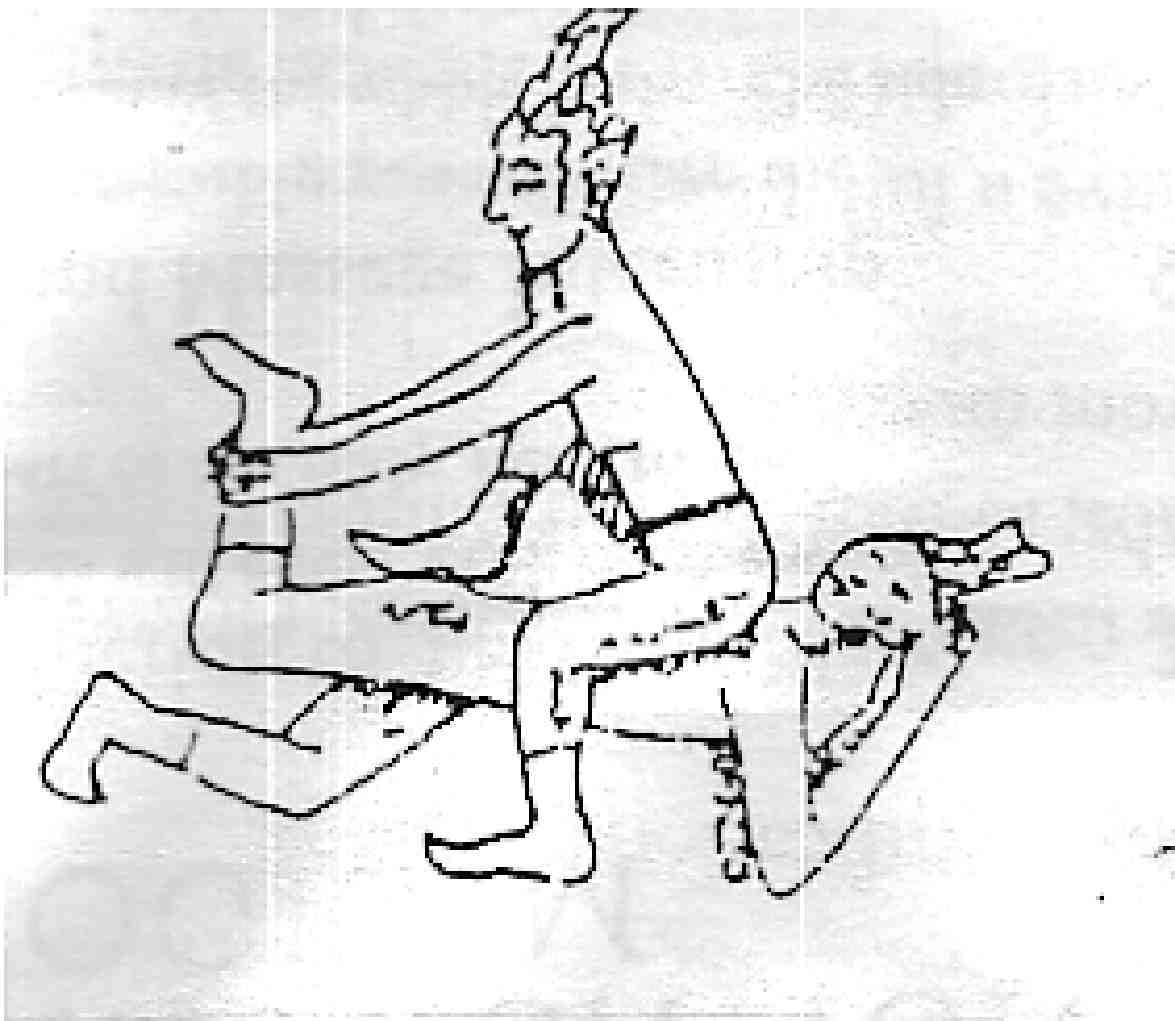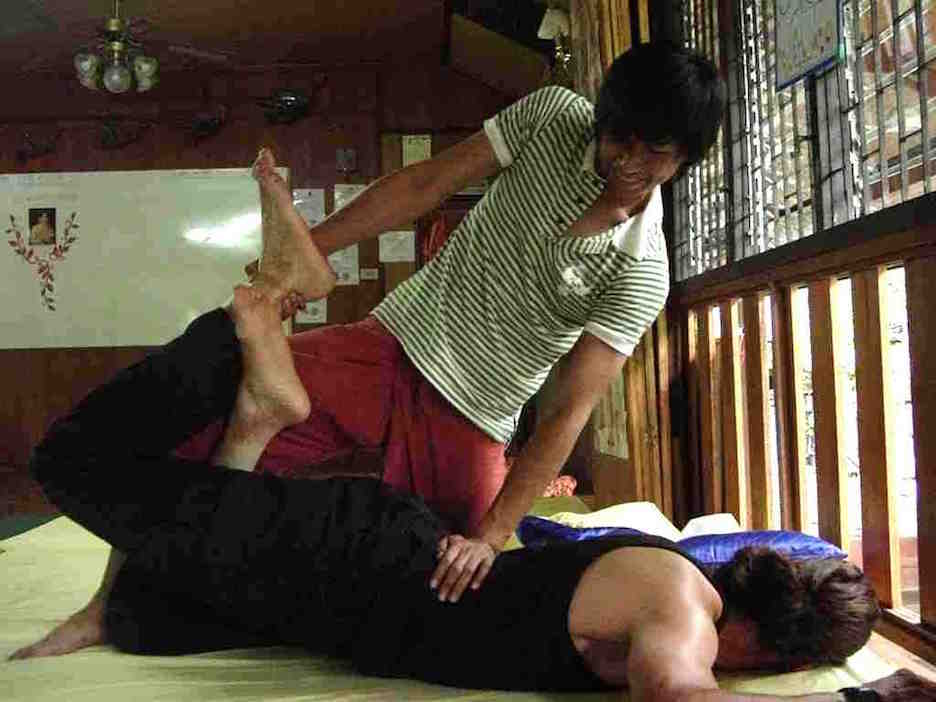What is Thai Massage?
Sunday, February 04, 2007
Jolie Bookspan, M.Ed, PhD, FAWM

There are many claims for massage, some real and some exaggerated or false. I searched for methods that provide real benefit. I studied sports massage in India and Nepal, and in certification programs of Shiatsu in Japan, TuiNa in China, and Nuad Borarn, (which is Thai for "ancient massage") in programs in the United States and Thailand. We are here in Thailand now, working on many projects.
Thai massage has been called "Yoga Done For You." You rest comfortably on the floor on a soft mat, clothed, except for bare feet. There is no rubbing as in Swedish massage, but pressing and wonderful stretches.
The person associated with founding or codifying Thai Massage was Shivaga (or Jivaka) Komalaboat. Some practitioners in the United States call him Dr. Zhivago, like the main character Yuri Andreyevich Zhivago in the Russian epic by Boris Pasternak. But that is just a funny mispronunciation.
The "Father Doctor" or "Hermit Doctor" Jivaka is reported to have been born in northern India, and became a doctor of traditional medicine. According to some sources, he was a contemporary, even advisor, of The Buddha and great kings. He moved to what is now Tibet. His teachings came to Thailand and Burma over a thousand years ago. Father Jivaka is so important to traditional medicine throughout all these areas that he is also called the "Thrice Crowned King of Tibetan medicine." Drawings and statues of him, many with small shrines, are common in massage and medicine schools and pharmacies.
 Many Thai massage stretches and movements are used in traditional Western sports medicine to reset resting muscle length, and find and relieve unhealthy muscle and joint tensions. I learned these techniques in school in the United States when I studied orthopedics. When I first came to Thailand to train and compete in martial arts, I was surprised to find they were established techniques for massage, and helpful for boxers recovering from injuries and strenuous training and matches. The photo, to the left, shows a nice stretch for the front of the hip. Several past posts explained how important it is to stretch the anterior hip. Most people keep the hip bent forward in a shortened position all day for sitting, then only bend forward more to exercise with crunches, pilates moves, toe touches, and others. A tight, shortened anterior hip contributes to many pain syndromes, and results in not being able to use hip and leg muscles properly when walking and exercising.
Many Thai massage stretches and movements are used in traditional Western sports medicine to reset resting muscle length, and find and relieve unhealthy muscle and joint tensions. I learned these techniques in school in the United States when I studied orthopedics. When I first came to Thailand to train and compete in martial arts, I was surprised to find they were established techniques for massage, and helpful for boxers recovering from injuries and strenuous training and matches. The photo, to the left, shows a nice stretch for the front of the hip. Several past posts explained how important it is to stretch the anterior hip. Most people keep the hip bent forward in a shortened position all day for sitting, then only bend forward more to exercise with crunches, pilates moves, toe touches, and others. A tight, shortened anterior hip contributes to many pain syndromes, and results in not being able to use hip and leg muscles properly when walking and exercising.Many Thai massage moves are helpful. There are a few Thai massage moves that can be unhealthy. When I give or teach Thai massage, I omit the unhealthy moves. When I get Thai massage at home in Thailand, it is an art to politely manage to stop the tiny practitioners from holding you in an iron grip as they apply these moves.
More on benefits and pitfalls in Thai massage:
- Changing Thai Massage to Be Healthier Part I - Avoid Pressuring Lower Back Discs
- Making Thai Massage Healthier Part II - Avoid Snapping Elbows or Knees Backward
- Keeping Thai Massage Healthy Part III - Should You Do "The Blood Stop?"
- See the Thai massage link on my web site.
Drawing, traditional massage drawing.
Photo © copyright DrBookspan
Photo © copyright DrBookspan
Labels: hip, martial arts, massage, performance enhancing modality, yoga

0 Comments:
Post a Comment
<< Home